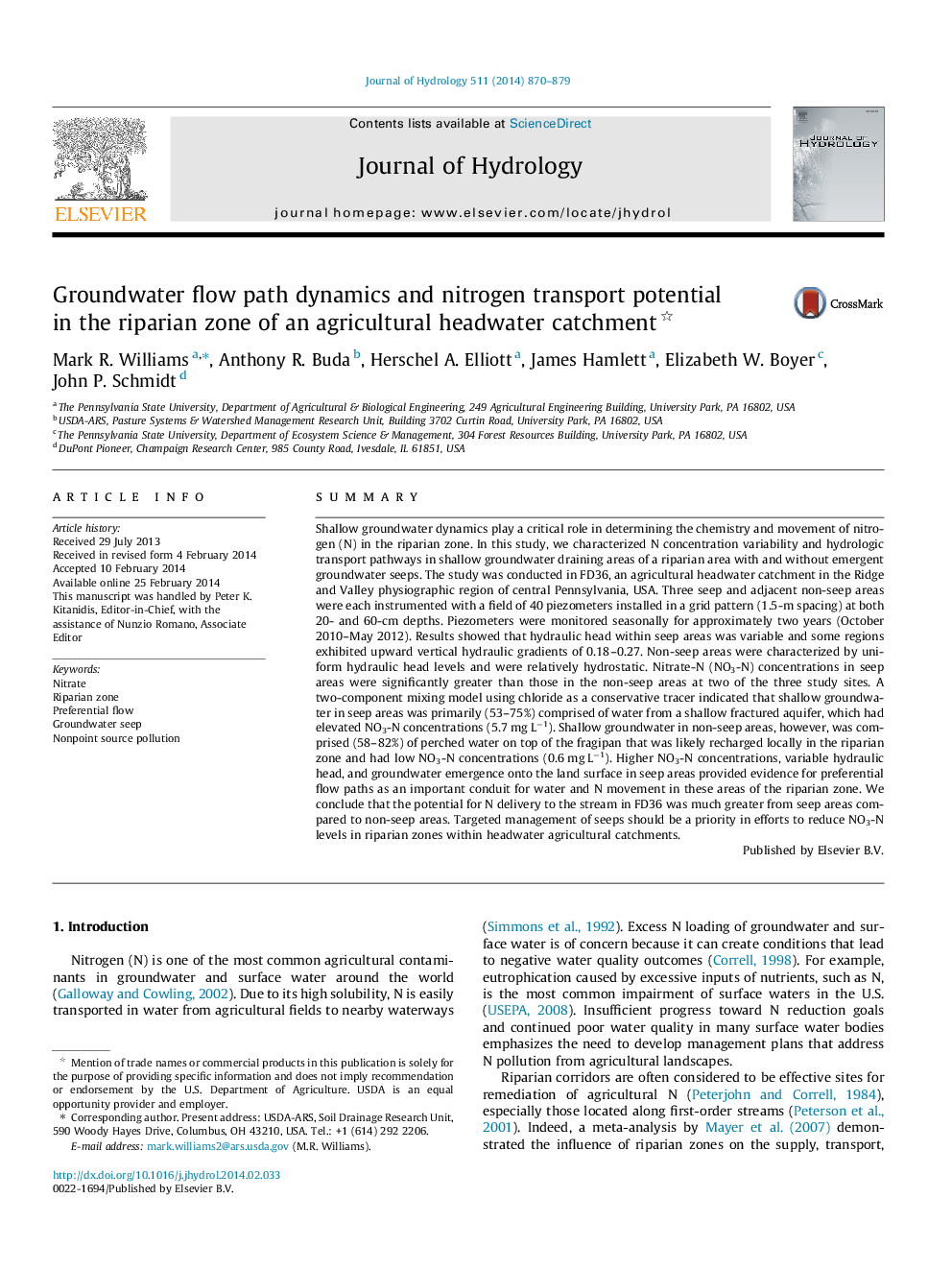| کد مقاله | کد نشریه | سال انتشار | مقاله انگلیسی | نسخه تمام متن |
|---|---|---|---|---|
| 6413371 | 1629937 | 2014 | 10 صفحه PDF | دانلود رایگان |
- We compared N flow pathways in riparian areas with and without groundwater seeps.
- Shallow groundwater in seeps had higher NO3-N concentration than in non-seep areas.
- Water and N in seep water likely originated from an aquifer with high NO3-N levels.
- Water and N in non-seep water likely originated from a local perched water system.
- N management plans in agricultural headwater catchments should target seep areas.
SummaryShallow groundwater dynamics play a critical role in determining the chemistry and movement of nitrogen (N) in the riparian zone. In this study, we characterized N concentration variability and hydrologic transport pathways in shallow groundwater draining areas of a riparian area with and without emergent groundwater seeps. The study was conducted in FD36, an agricultural headwater catchment in the Ridge and Valley physiographic region of central Pennsylvania, USA. Three seep and adjacent non-seep areas were each instrumented with a field of 40 piezometers installed in a grid pattern (1.5-m spacing) at both 20- and 60-cm depths. Piezometers were monitored seasonally for approximately two years (October 2010-May 2012). Results showed that hydraulic head within seep areas was variable and some regions exhibited upward vertical hydraulic gradients of 0.18-0.27. Non-seep areas were characterized by uniform hydraulic head levels and were relatively hydrostatic. Nitrate-N (NO3-N) concentrations in seep areas were significantly greater than those in the non-seep areas at two of the three study sites. A two-component mixing model using chloride as a conservative tracer indicated that shallow groundwater in seep areas was primarily (53-75%) comprised of water from a shallow fractured aquifer, which had elevated NO3-N concentrations (5.7 mg Lâ1). Shallow groundwater in non-seep areas, however, was comprised (58-82%) of perched water on top of the fragipan that was likely recharged locally in the riparian zone and had low NO3-N concentrations (0.6 mg Lâ1). Higher NO3-N concentrations, variable hydraulic head, and groundwater emergence onto the land surface in seep areas provided evidence for preferential flow paths as an important conduit for water and N movement in these areas of the riparian zone. We conclude that the potential for N delivery to the stream in FD36 was much greater from seep areas compared to non-seep areas. Targeted management of seeps should be a priority in efforts to reduce NO3-N levels in riparian zones within headwater agricultural catchments.
Journal: Journal of Hydrology - Volume 511, 16 April 2014, Pages 870-879
